EPA and NHTSA Officially Release Fuel Economy Plan, California Decidedly Pissed

After months of discussion, circulating drafts, and arguing with the State of California, the Environmental Protection Agency and National Highway Traffic Safety Administration formally unveiled their plan to rewrite the existing corporate average fuel economy (CAFE) rules and replace them with something far less stringent.
The proposal would freeze the presiding standards in 2020 under the “Safer Affordable Fuel-Efficient (SAFE) Vehicles Rule for Model Years 2021-2026 Passenger Cars and Light Trucks” plan, which is a mouthful.
It also moves to revoke California’s authority to set its own mandates, as predicted. The Golden State made it clear that it wants to maintain the Obama-era limits. However, the proposal includes a section emphasizing the importance of a single national standard, saying it would seek to withdraw the waiver granted to California in 2013.
“Attempting to solve climate change, even in part, through the Section 209 waiver provision is fundamentally different from that section’s original purpose of addressing smog-related air quality problems,” reads the proposal. “When California was merely trying to solve its air quality issues, there was a relatively-straightforward technology solution to the problems, implementation of which did not affect how consumers lived and drove.”
Basically, the EPA and NHTSA think California is overstepping its bounds, noting that the state “disproportionately focused on [greenhouse gas] emissions” over the last decade while ignoring other air quality issues, especially outside the automotive sector.
It also mentions that California’s own rules conflict directly and indirectly with the existing and proposed federal mandates, regardless of how strict they are. While that’s definitely true, the administration’s decision to lower the standards isn’t really going above and beyond in terms of environmental welfare, either.
That’s not to suggest the new proposal is entirely environmentally backwards. Corporate average fuel efficiency will still increase through 2020, leaving the government with the option of raising the limits later on. But how likely that might be is another matter — the bulk of the plan seems to revolve around consumer feasibility and what works for automakers.
It doesn’t try to make this a secret. The proposal explicitly states that the agencies’ analysis of CAFE and CO2 standards involves two basic elements: how manufacturers would respond to evolving emission mandates and what affect this would have on consumers. We already know U.S. drivers are opting for larger vehicles to a degree that completely stagnates the sales-weighted efficiency average. The government seems concerned that forcing more fuel efficient models risks the health of the automotive industry, adding that it would be physically dangerous to customers.
“A 2018 government study by NHTSA shows new model year vehicles are safer, resulting in fewer deaths and injuries when involved in accidents, as compared to older models. Therefore, the Administration is focused on correcting the current standards that restrict the American people from being able to afford newer vehicles with more advanced safety features, better fuel economy, and associated environmental benefits,” reads the proposal.
This is rather specious reasoning. While shifting toward extremely strict economy standards would likely involve downsizing vehicles to some degree, they wouldn’t suddenly become less safe than vehicles from decades prior. Larger vehicles will always outperform a smaller one in a collision, but advanced safety technologies won’t be abandoned overnight just to save weight.
The only real risk here is the added costs manufacturers will have to take on to ensure safety while also maximizing efficiency, which will affect their bottom line and trickle down to consumers. But the NHTSA sees this as a life-or-death situation. “If adopted, the proposed rule’s preferred alternative would save more than $500 billion in societal costs and reduce highway fatalities by 12,700 lives (over the lifetimes of vehicles through MY 2029),” the proposal claims.
“A 2018 government study by NHTSA shows new model year vehicles are safer, resulting in fewer deaths and injuries when involved in accidents, as compared to older models. Therefore, the Administration is focused on correcting the current standards that restrict the American people from being able to afford newer vehicles with more advanced safety features, better fuel economy, and associated environmental benefits.”
Honestly, we’re more concerned with the prospect of pint-sized engines than the safety aspect, and this reads like the government is more interested in helping automakers sell cars than anything else. It’s hard to know who to root for, as there’s so many things to consider. Automakers are worried about volume and profits, customers are worried about size and price, enthusiast are worried about performance and innovation, environmentalists are worried about pollution, and so on and so forth.
However, the EPA can’t enforce a national rollback if California and a handful of other states are playing by their own rules. Automakers would have trouble catering to a handful of states adhering to a different set of rules and their ability to do so would undermine the federal government’s authority on the matter. Revoking its waiver under the Clean Air Act had to happen, and a showdown is coming.
California Gov Jerry Brown promised his state would fight the new plan “in every conceivable way possible.” He’s already leading the charge in a lawsuit against the EPA. “For Trump to now destroy a law first enacted at the request of Ronald Reagan five decades ago is a betrayal and an assault on the health of Americans everywhere,” Brown of the Clean Air Act. “Under his reckless scheme, motorists will pay more at the pump, get worse gas mileage and breathe dirtier air.”
Obviously, the EPA and NHTSA have differing opinions on the matter, but both frame the proposal as a way to mitigate regulatory initiatives in a manner that wouldn’t negatively impact the economy without the wholesale abandonment of efficiency mandates.
“There are compelling reasons for a new rulemaking on fuel economy standards for 2021-2026,” said Transportation Secretary Elaine Chao. “More realistic standards will promote a healthy economy by bringing newer, safer, cleaner and more fuel-efficient vehicles to U.S. roads and we look forward to receiving input from the public.”
“We are delivering on President Trump’s promise to the American public that his administration would address and fix the current fuel economy and greenhouse gas emissions standards,” added EPA Acting Administrator Andrew Wheeler.
“Our proposal aims to strike the right regulatory balance based on the most recent information and create a 50-state solution that will enable more Americans to afford newer, safer vehicles that pollute less. More realistic standards can save lives while continuing to improve the environment. We value the public’s input as we engage in this process in an open, transparent manner.”
The Department of Transportation is seeking public comment on regulatory issues and has allowed for 60 days to provide feedback on this proposal. If you’d like to take a look at the document in full, it’s available here. Comments can be made through regulations.gov, using docket EPA-HQ-OAR-2018-0283.

A staunch consumer advocate tracking industry trends and regulation. Before joining TTAC, Matt spent a decade working for marketing and research firms based in NYC. Clients included several of the world’s largest automakers, global tire brands, and aftermarket part suppliers. Dissatisfied with the corporate world and resentful of having to wear suits everyday, he pivoted to writing about cars. Since then, that man has become an ardent supporter of the right-to-repair movement, been interviewed on the auto industry by national radio broadcasts, driven more rental cars than anyone ever should, participated in amateur rallying events, and received the requisite minimum training as sanctioned by the SCCA. Handy with a wrench, Matt grew up surrounded by Detroit auto workers and managed to get a pizza delivery job before he was legally eligible. He later found himself driving box trucks through Manhattan, guaranteeing future sympathy for actual truckers. He continues to conduct research pertaining to the automotive sector as an independent contractor and has since moved back to his native Michigan, closer to where the cars are born. A contrarian, Matt claims to prefer understeer — stating that front and all-wheel drive vehicles cater best to his driving style.
More by Matt Posky
Latest Car Reviews
Read moreLatest Product Reviews
Read moreRecent Comments
- SCE to AUX This was the same car I had (05 xB, stick, "camouflage" color) for 7 years - great car.We called ours "The Lunchbox". I added aftermarket wheels, and the 3rd-party cruise control the dealers could install.It suffered only two failures: bad window switch in week 2 (dealer fixed in 1 hour), bad trailing O2 sensor (fixed myself for $70). Fuel economy was always 28-34 mpg.It was a potential death trap, and ride quality became unbearable after 2 hours. I once did a 10-hour round trip in it and could barely walk after.Traded it for a 2012 Leaf, which was a better car in some ways.
- Bd2 The "e" nomenclature signifies the e-ATPs which BMW is pursuing.
- Dave M. I'm sorry to see any storied name go away. The lifespan of the Malibu has fit perfectly in my lifetime years-wise. Some of the highlights include the first and second generations, the '78 revamp (very clean design), and the 2005 generation. Ford, GM and Mopar gave this segment away by allowing Toyota and Honda a foot in the door and then always having to play catch-up. How hard is it to make a truly competitive sedan at a profit? Obviously, Japan Inc. figured it out.I've driven a few rentals these past years; the Malibu got the job done but honestly the Passat and Altima were my rental preferences.
- Kcflyer actually yes. It's a shame that a product this uncompetitive can still outsell GM's entire EV offerings. Those products have had billions thrown at them. Imagine how nice the new Malibu, Impala, SS, and Lacrosse would be with that kind of commitment.
- 3SpeedAutomatic Nope....



















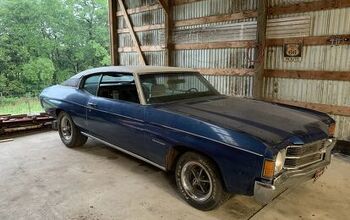

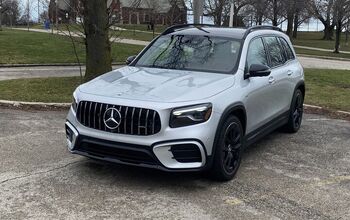
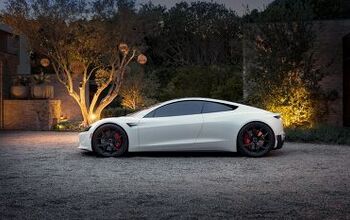

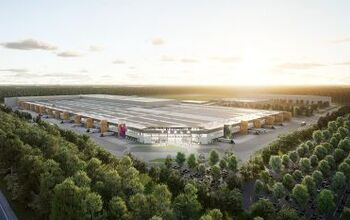



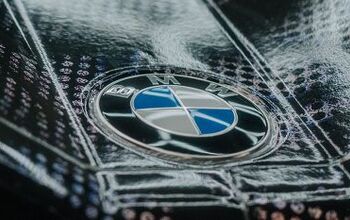

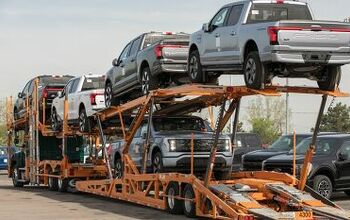
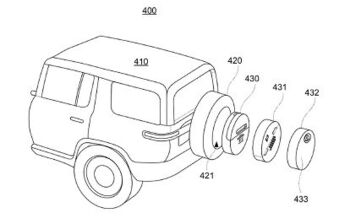
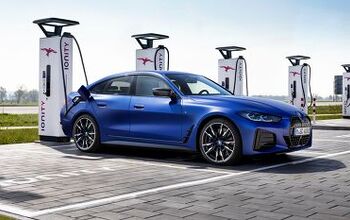
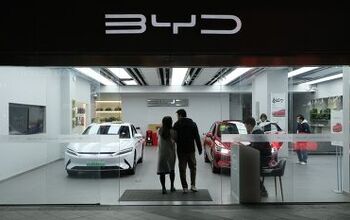
Comments
Join the conversation
StingRay and Sub-600: Unless you are getting your history from some idiot like Denesh D'Souza I have no idea how you came to such an absurd conclusion. But there is no arguing with people who are so far to the right. Your minds are closed. I'm sure you think your opinion is a fact uniquely discovered by you and a few other people you think equally smart. Your opinion is not a mainstream one in legitimate political thought. And btw I used my history degree to get into a good law school and have had a very nice career. And of course I'm sending my daughter to an equally liberal and east coast college. Your ideas are part of the past.
You're right, pointless argument. Conservatives just drive me up the wall sometimes. I leave the conversation since we will never agree on this.